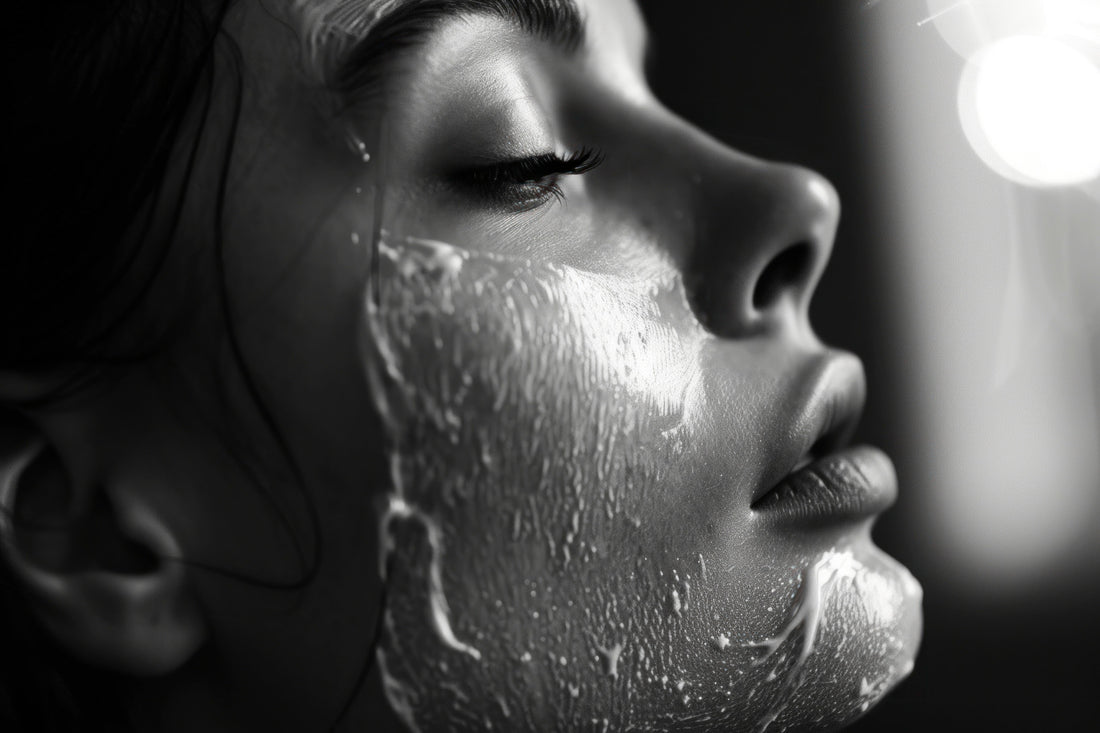
Types of peeling and their use at home
Share
What is peeling?
A peel is a tool or device that helps to remove dead skin cells from the skin. Peeling stimulates cell renewal, evens out skin tone and texture, keeps the skin clean and elastic, prevents or slows down the signs of aging, and helps fight various skin problems.
Peels are often used in beauty salons for facial or body treatments, but more and more manufacturers are offering peels for home use. For safety reasons, the choice of peels for home use is limited, and the buyer will not be able to purchase a product that is used in a beauty salon. However, there is a large selection of different types and strengths of peels for home use on the market.
It should be noted that even home peels can cause skin irritation, so choosing the right peel and using it is a very important step to avoid damaging the skin.
Types of peeling:
- Mechanical peelings
These are exfoliants with abrasive particles, most commonly known as scrubs.
Mechanical peeling acts superficially and removes dead skin cells thanks to the microparticles/granules contained in the product. Microparticles can vary in size, composition and shape (the rounder and smaller the particle, the more gentle the peeling will be). During the peeling, a micromassage is performed, improving blood circulation. The skin after peeling is smooth and fresh.
Mechanical peeling can also be performed with a special microdermabrasion machine in a beauty salon.
It should be noted that mechanical peeling will be more suitable for those with oily/combination skin. It is advisable not to perform mechanical peeling if you have the following skin conditions: signs: thin, sensitive, irritated skin, rosacea, couperose, inflammation, papules, pustules.
- Enzyme peels
The gentlest type of peeling, consisting of fruit enzymes (papaya, pineapple).
Enzymes break down the bonds that hold dead skin cells together. This gently loosens these cells, allowing them to naturally exfoliate without damaging the skin's protective barrier. The result is smoother, more radiant skin without irritation, peeling, or resurfacing.
Enzyme peels come in various formats: gel, cream, and powder.
This type of peeling is suitable for all skin types, especially sensitive skin. A safe choice for use at home, in all seasons.
- Chemical peels
Peels containing acids such as alpha-hydroxy acid (AHA), beta-hydroxy acid (BHA) and poly-hydroxy acid (PHA).
Acids are chemical exfoliants that are widely used to improve various skin conditions, such as acne, rosacea, hyperpigmentation, or signs of aging .
Chemical peels remove dead skin cells, but the process can be more irritating than other types of peels. Depending on the type and concentration of the acid, the effect and skin irritation may vary. After a chemical peel, the skin looks smoother, cleaner, more radiant, and the skin tone is evened out.
When starting a chemical peel, it is recommended to choose a lower concentration of acid. The skin may be slightly sensitive and pink after the peel.
Skin will be more sensitive to UV radiation after peeling, so it is imperative to use SPF!
How often can you use a peel?
It is very important to follow the instructions and not exfoliate more often than recommended by the manufacturer or specialist. 1-2 x per week is the optimal frequency, but it all depends on the condition of the skin and the choice of peel.
In what cases should peeling not be performed?
- Overly sensitive, damaged or very dry skin
It is recommended not to peel if the skin is damaged, red, or sensitive. If you have sunburn, peeling, or a burning sensation, peeling can cause serious damage.
- After recent aesthetic procedures
If you have had a peel, dermabrasion, laser procedure, or aesthetic injections, it is advisable not to have a peel for 2-4 weeks.
- Acute inflammation, skin disease or allergy
For acute inflammation or aggravated skin conditions, use as few irritants as possible and focus on moisturizing, soothing, and repairing the skin. Do not use peels on open wounds, ulcers, or infections.
- Medications or topical agents
Be especially careful if you are taking medications that make your skin thinner and more sensitive (such as isotretinoin). If you are using strong topical medications daily, or are trying to start using them (such as retinoids), it is recommended to avoid exfoliating for a while to let your skin get used to the daily care. Once you feel comfortable with your daily care, you can gradually add exfoliation.
- Pregnancy or breastfeeding (applies to chemical peels)
It is not recommended to use retinoids and various acids in high concentrations during pregnancy and lactation.
